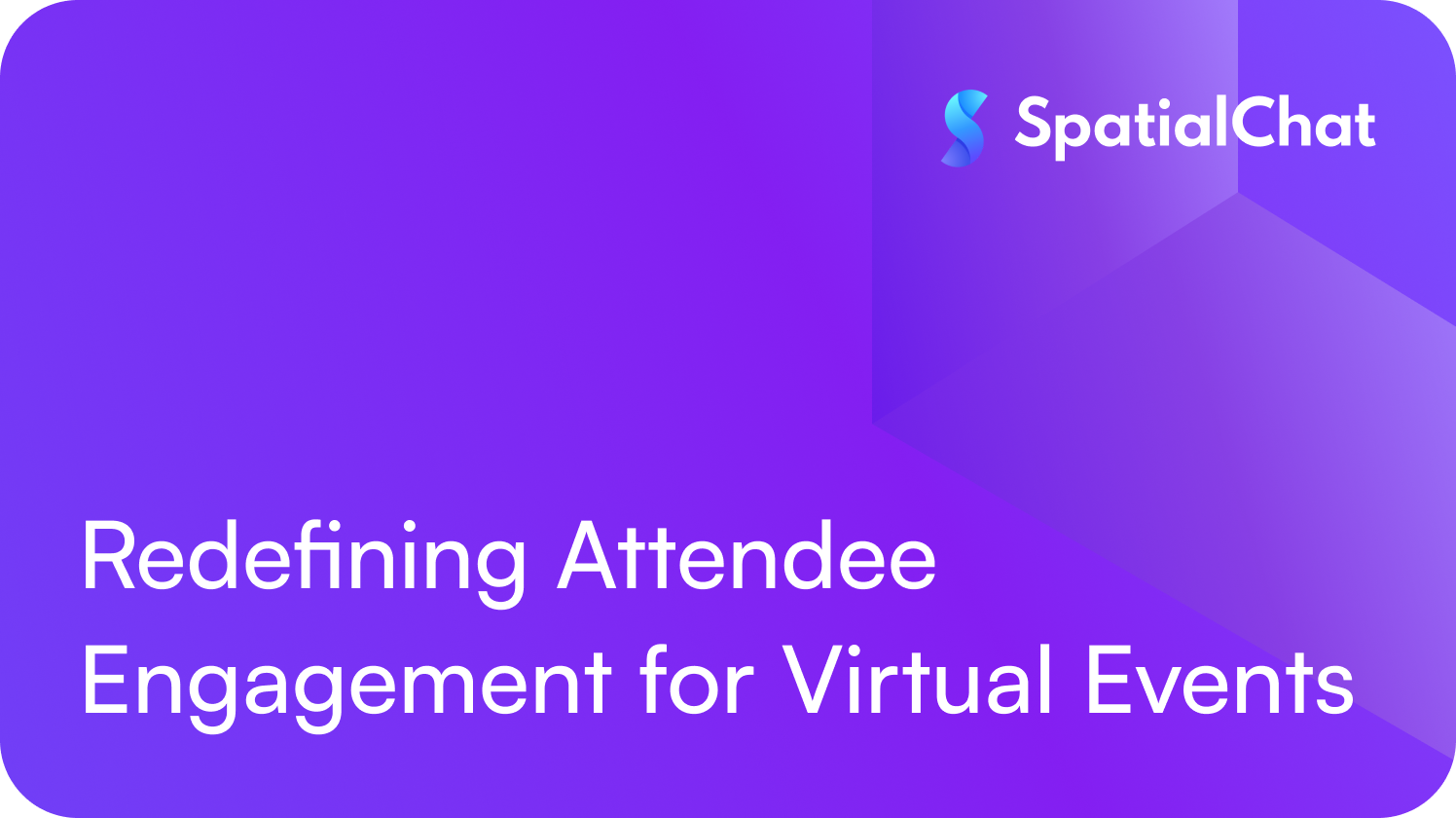“Attendee engagement” is one of the most talked-about goals in the virtual events space — and often one of the most misunderstood. It’s a term event tech providers love to highlight, but what does it actually look like online? More importantly, how can you measure it and meaningfully improve it?
Define What Engagement Means for Your Virtual Event
In a virtual setting, engagement is all about how actively and meaningfully attendees interact with your event environment — from content and conversations to sponsors and your brand. Yes, showing up counts. But real engagement goes beyond passive attendance — it’s about participation.
The first step is to connect engagement goals to your event’s core purpose. Say you’re hosting a virtual user conference to announce product updates, share expertise, and strengthen customer loyalty. Your engagement strategy (and the platform features you prioritize) should focus on creating interactive learning experiences, live feedback channels, and community-building moments.
Four Key Types of Virtual Attendee Engagement
- Content Engagement: In a virtual world, content is king — but only if it’s accessible and interactive. Think beyond pre-recorded sessions. Use live Q&As, polls, breakout rooms, and on-demand content libraries to keep attendees leaning in, not tuning out.
- Peer Engagement: One of the biggest myths about virtual events is that networking doesn’t work. It does — if it’s intentional. Use AI attendee matchmaking, one-on-one video chats, themed group discussions, and virtual lounges to create space for organic connections.
- Sponsor Engagement: Virtual sponsors want more than logo placements on your landing page. Offer branded sessions, virtual booths with live reps, interactive demos, and data-driven lead capture tools to ensure they get value — and come back next time.
- Organizer Engagement: Communication is just as important online — if not more so. Use push notifications, live chat, surveys, and in-platform messages to keep attendees informed, supported, and heard throughout the event lifecycle.
Turning Engagement Into Insight
Each type of engagement gives you valuable insight into your audience — what interests them, how they participate, and where they find the most value. That data helps you continuously refine your virtual event strategy and create even better experiences over time.
But here’s the catch: simply offering engagement tools doesn’t guarantee that people will use them. From polls and Q&A to networking features and session agendas, virtual event platforms offer a lot — but success depends on how these tools are implemented.
Walk in Your Attendees’ (Virtual) Shoes
Want attendees to make the most of your event? Think like them. Clear navigation, informative content previews, smooth sign-ups, and intuitive interfaces all make a difference. A technically solid platform is only the beginning — the real impact comes from thoughtful execution.
If you’re offering session tracks, make sure attendees have enough context to choose what suits them. If you're creating a networking hub, don’t let it feel like a ghost town — pre-seed it with conversation starters, active participants, or suggested connections. If you're using live polling or interactive elements, train your speakers to weave them in naturally so the experience feels seamless and relevant.
Communicate with Purpose
One of the biggest mistakes organizers make? Launching new event tech features with little to no explanation. Simply announcing a feature isn’t enough. You need to sell the value of that technology — tell attendees what it does, how it helps them, and where to find it.
Your keynote speakers and moderators should actively reference these tools and show excitement about using them. When you model engagement from the top, attendees are far more likely to follow your lead.
Measuring What Really Matters
A common metric for virtual event success is how many people use a feature — but that only tells half the story. The real indicator of value is repeat usage.
Did attendees return to the agenda again and again to plan their day? Did they vote in every poll or keep revisiting sponsor booths? These actions show your tech isn’t just present — it’s useful. On the flip side, if usage drops off after one interaction, that’s a sign something missed the mark.
Focus for Impact
You don’t need to activate every engagement feature at once. In fact, trying to do it all can dilute your efforts. Start by identifying one or two areas that align closely with your event’s goals — whether that’s content interaction, community building, or sponsor engagement — and focus on delivering those exceptionally well. Once you’ve nailed those, you can expand your strategy in future events!
